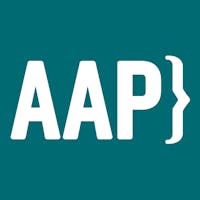Listen to your customers. It makes sense in any business. But in education—and especially ed tech product development—this advice is more crucial than ever.
We’ve been listening. My organization, the Association of American Publishers (AAP) PreK-12 Learning Group, advocates for quality content for teaching and learning. Over the years, we’ve invited hundreds of educators to share their perspectives with our members—educational product developers and platform providers—at webinars, seminars, and our annual Content in Context (CIC) conference, which we believe is the top learning and networking event for education business professionals. We also recruit dozens of teachers each year to evaluate entries in our REVERE Awards, honoring excellence in educational materials across all media that support teaching and learning.
Through these conversations, we’ve learned a great deal about what works in the classroom. In recent years, we’ve noticed a common theme—educators tell us that the learning resources marketed to them often just don’t fit their needs. Additionally, they have reservations about cost, accessibility, support, etc. Without clear answers, educators and administrators won’t risk spending increasingly scarce money on new materials. And without fully understanding their customers’ concerns, education companies won’t be able to deliver solutions that effectively help teachers teach and students learn.
A checklist for successful product development
Below is a short list of what we think are the keys to developing successful products, as shared by educators and administrators themselves. Consider this a checklist for edupreneurs, education startups, and even seasoned industry veterans who see value in being reminded of the fundamentals. Feel free to print it out and share it with your product team.
1. Solve real problems.
We’ve heard from many, many educators and administrators (most recently Baltimore's Superintendent Dallas Dance) that education companies—particularly those in the edtech space—often come to them with solutions to problems that either don’t exist or fall way down on the list of their priorities. Talk to administrators and educators early and often to make sure you’re addressing real problems that schools are facing on the ground.
2. Give them data.
And don’t lock it up in a box. Tracking, assessing, and reporting on student progress has become paramount in every school in the U.S. And education product developers need to make sure that data is as accessible as possible. This means two things: 1) Teachers and administrators should be able to easily view data in a meaningful way, e.g., quick snapshots of individual and class progress on specific tasks. 2) It should be easy to move that data between the various student information systems, learning management systems, and other technology platforms in use in today’s schools.
3. Closing the sale is just the beginning.
No matter how strong the product, it won’t succeed without a smooth implementation and teacher buy-in. This happens with: 1) excellent introductory product training that doesn’t take weeks to complete and doesn’t bore educators to tears; 2) ongoing incremental support embedded in the product such as tips on using tools and links to research or additional resources; and 3) outstanding, dependable customer and/or technical support that is easily accessible both during and after school hours.
4. Don’t over promise.
Today’s teachers are short on time and money. Education companies will do well to make their products easy to find online; be clear and truthful about what they do; and display any research, testimonials, or reports that support their claims. The school and district purchasing process can be long and involves many decision-makers; exaggerations will be discovered and will only work to discredit your product and brand.
5. Know thy customer.
Yes, we’ve already said this, but in this case we mean not just knowing your customers’ needs but also learning about their capabilities. Your web-based product may look great on paper, but it won’t be a great fit for a district that doesn’t have the broadband capacity for your tool or if some of the students don’t have reliable high-speed Internet access at home.
6. Align your product to curriculum standards.
For real. While we’ve listed this last, it is certainly not least important. In fact, many teachers would probably rank standards alignment at the very top of this list. Make sure you’re familiar with the curriculum standards in every state in which you’re selling, and make sure your product truly aligns with the learning objectives. Just changing your marketing message doesn’t count. (For example, know whether the state or district has adopted the Next Generation Science Standards, which among other key changes require a focus on engineering.)
You are not alone
Creating a successful education product isn’t easy. The good news is you’re not alone. There are networking groups and supporting organizations for education businesses at all stages of development. For example:
- Edtech meetups are great for bouncing around early stage ideas.
- Incubator programs like LearnLaunch and the Education Design Studio at UPenn are fantastic resources for turning your idea into a business.
- Industry events like our Content in Context, EdNET, SXSWedu, and the Education Industry Symposium connect you with information and colleagues.
- Trade organizations like AAP and SIIA provide professional development, networking, and advocacy opportunities for education startups and multinationals alike.
Make the most of industry events
Specifically, attending an industry event can be a great way to get important information to help you with business and product development strategies. Here are five tips to make sure you get the most bang for your buck out of any event:
1. Set your business goals
Are you trying to make new contacts? Get up-to-date on the latest school trends? If you are clear on what you want to get out of the event ahead of time, you can better tailor your experience.
2. Learn the schedule
Whether it’s an evening program or a three-day event, you should read the schedule ahead of time. Mark the must-attend sessions; know when you have breaks for making phone calls, checking emails, etc.; and highlight the networking opportunities.
3. Know who’s going
Many events will share an attendee list with participants ahead of time—sometimes with contact info. Scope out the list and figure out whom you want to meet. If you can’t reach out ahead of time, you'll at least know whom you're looking for on site.
4. Take notes
This is your professional development time. While some conferences will share presentations afterwards, you want to have your own record of any information that impacts your company and colleagues. More important, have your notes ready to share when you get back.
5. Network
It can be easy to skip receptions and group luncheons. If you do, you could be missing out not only on potential business deals but also the opportunity to gain insights from the your colleagues in the learning resource community. They are usually willing to discuss their experiences and give you feedback. Remember, we all share the same goal: helping teachers teach and students learn.
The bottom line is, there is a huge and amazingly supportive community of individuals, organizations, and companies out there all working toward a common goal—improving educational outcomes. Don’t be afraid to tap into it. You might be surprised to find the amount of resources at your disposal.



